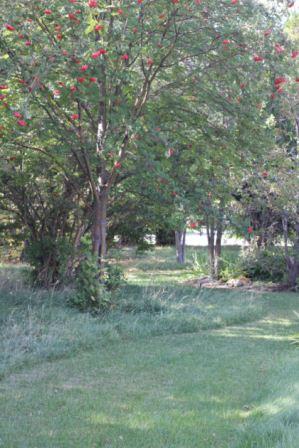A naturalized garden area in the yard can satisfy a variety of goals, but it often takes a different way of thinking about a yard. Border areas make good naturalized areas, and can provide a backdrop for other plants and can reduce overall yard maintenance.
Developing a naturalized area can be difficult. Care must be taken to maintain the area so that weedy species do not become problematic. It may take several years for a naturalized area to become established and certain stages of the naturalization process may appear weedy to those used to a more neat landscape.
If you wish to try this approach, make sure you carefully observe and identify unwanted species growing in the naturalized area and remove them promptly.
Naturalized areas can include prairies, wildflower gardens, woodlands and forest gardens. Determine what your goal(s) for the area will be.
Goals can include:
- Lower maintenance
- Wildlife habitat
- Forest garden with a variety of edible perennial trees and shrubs
- Aesthetics
Plants can reflect the native landscape or other water-wise, non-native and non-invasive species can be used. Specific designs and types of plants attract different types of wildlife. Many homeowners wish to attract birds, butterflies, bees and other insects to the garden. Designing a naturalized area in the yard is one way to create these habitats.


Additional Resources:
Prairie Gardens as an Alternative to Turfgrass
Attracting Hummingbirds to Your Garden Using Native Plants
West
Utah: Planting Bulbs Now for a Spring Color Explosion
Northeast
Massachusetts: Trees, Shrubs, and Vines for Low Maintenance Landscapes
Midwest
Minnesota: Planting and Maintaining a Prairie Garden
Southeast
Mississippi: Native Shrubs for Mississippi Gardens
